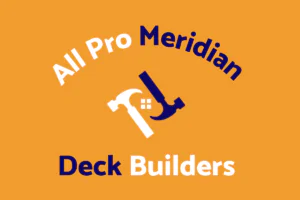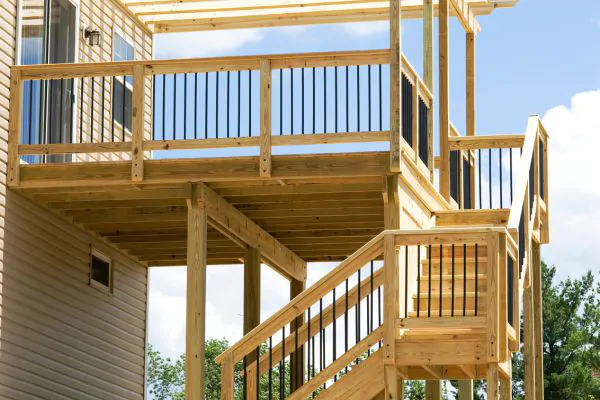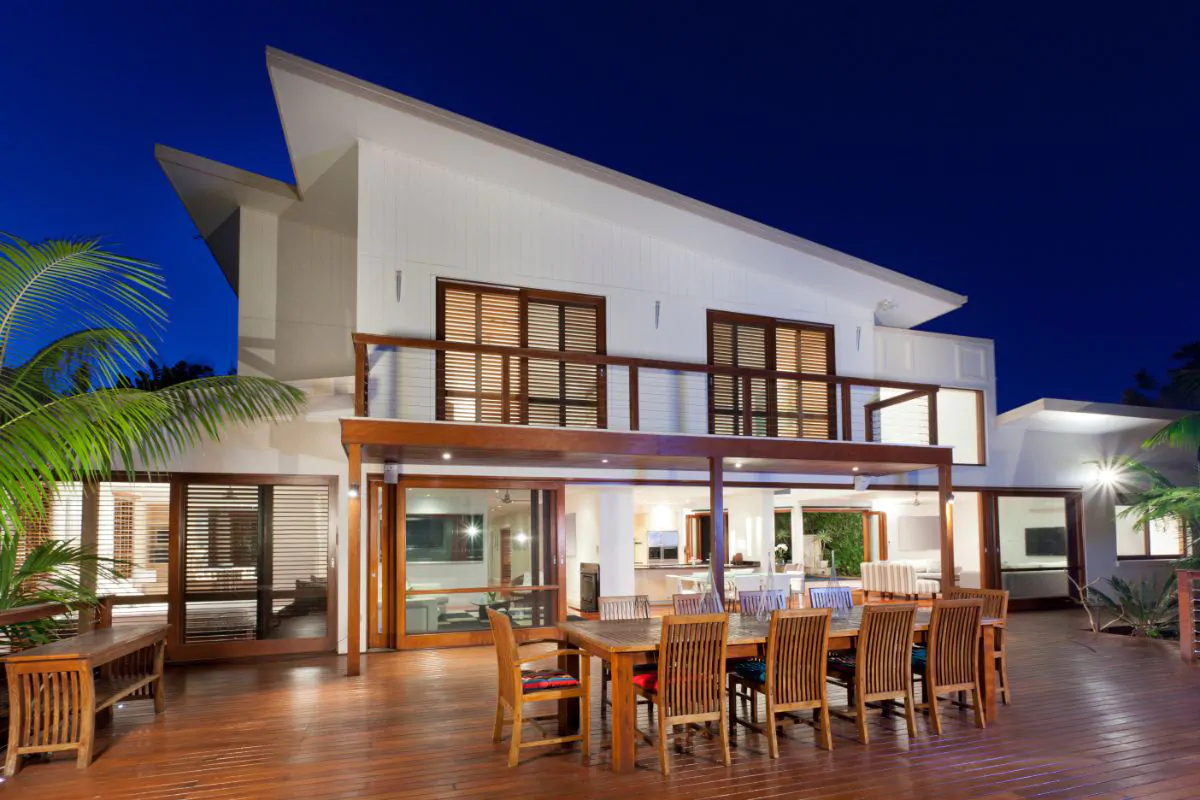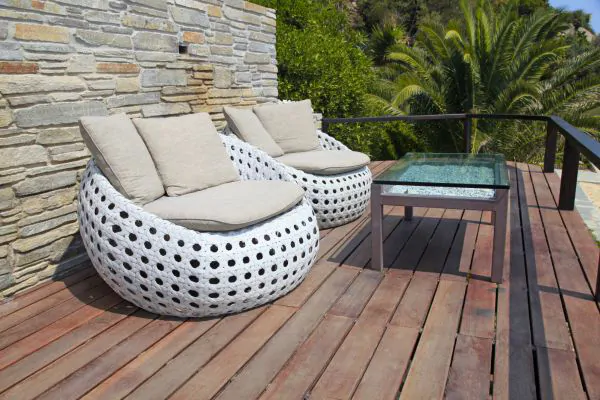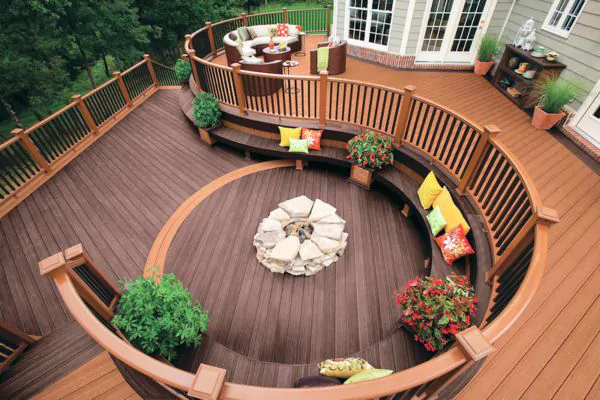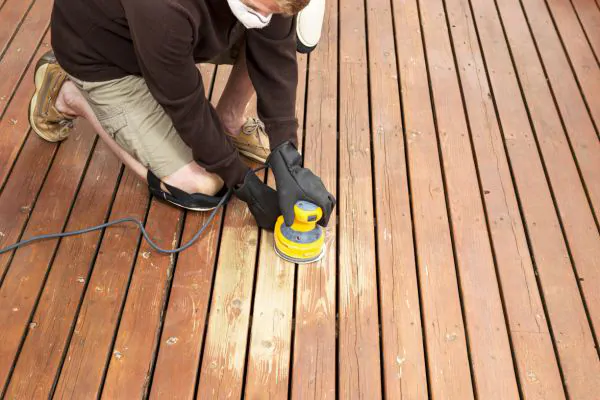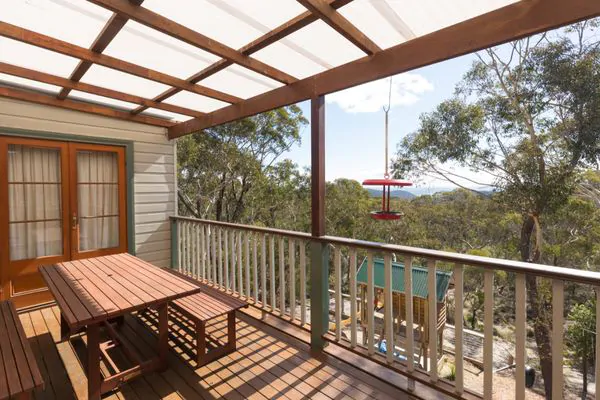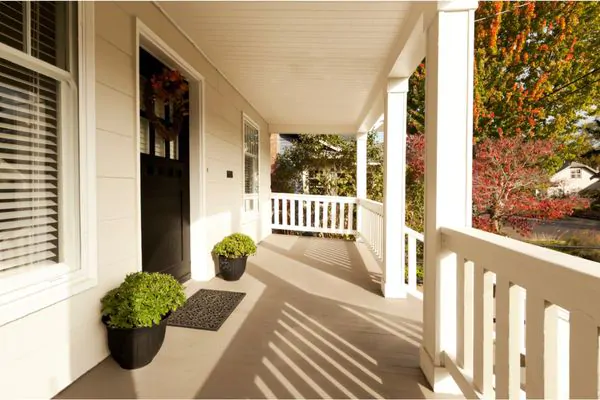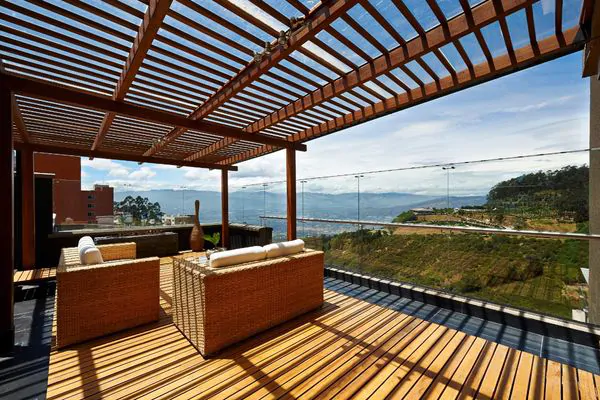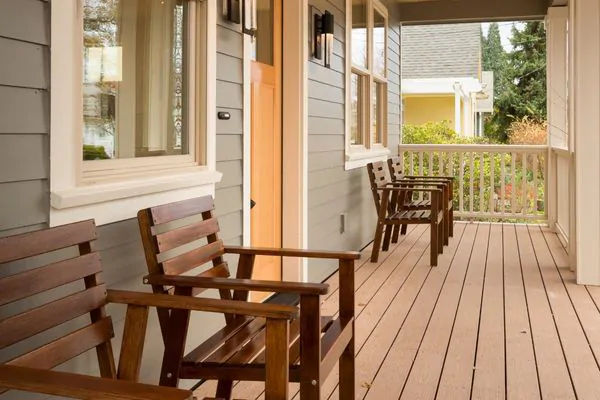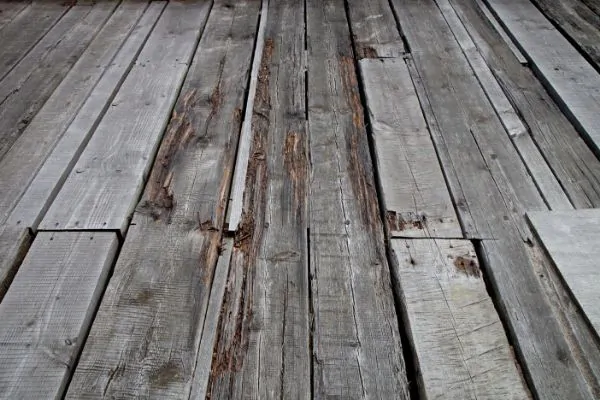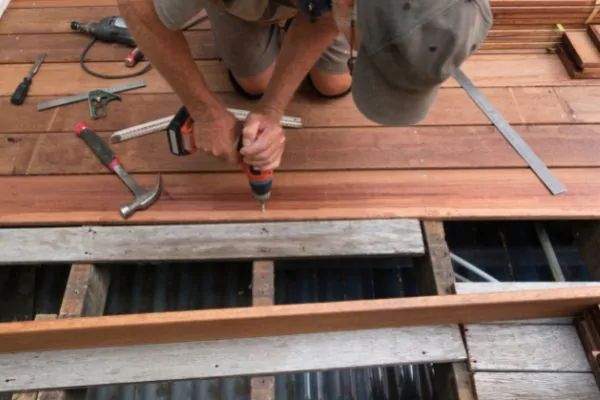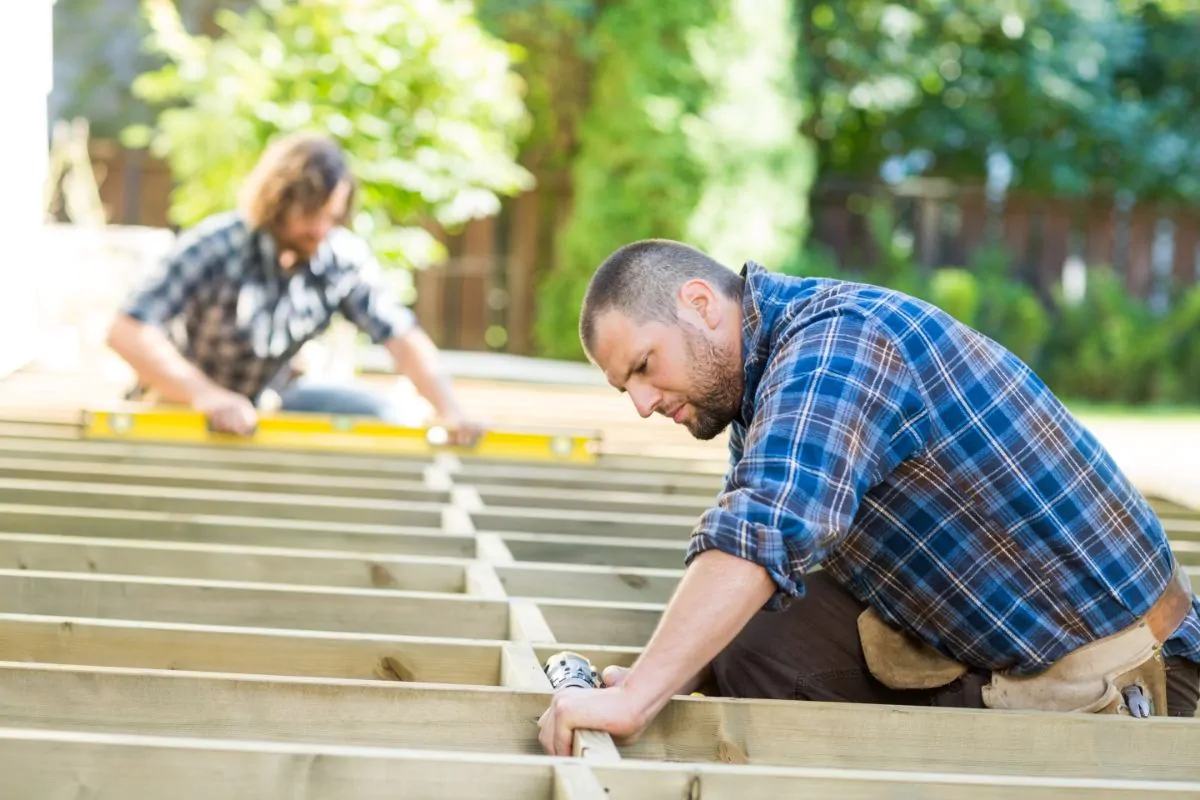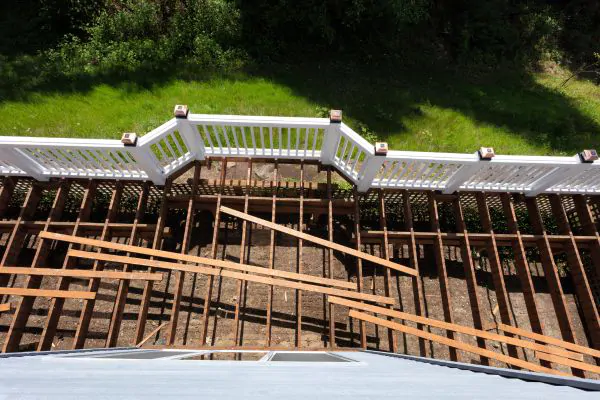
Building a deck is more than just putting boards together; it requires understanding its structure and components. With years of experience in designing and constructing decks, we at All Pro Meridian Deck Builders have come to appreciate the intricacy of what makes a strong and lasting deck.
This blog post draws from that extensive background, aiming to demystify the parts of a deck for those looking to enhance their outdoor living space.
Decks are complex structures with many parts working together to ensure stability and durability. One essential fact you might not know is that proper joist protection can significantly extend the life of your deck by preventing decay.
Keep reading for insights into building or upgrading your deck effectively. Get ready to learn!
The Anatomy of a Deck
The substructure of a deck provides the framework for the entire structure. The decking surface is what you and others will be walking on.
Substructure
Building a solid deck starts with its substructure, which holds everything above ground. This foundation is key to your deck’s stability and longevity. It includes the footings that anchor the deck to the ground, preventing it from shifting.
Support posts connect these footings to the rest of the structure, which literally lifts your decking surface.
Components of a deck like beams and joists form part of this crucial base layer. Beams run horizontally and support the joists; these in turn hold up the decking boards. Proper installation ensures your deck stands firm against weather and wear for years.
Always choose durable materials for these parts to safeguard against rot and insects, guaranteeing a stronger framework beneath your feet.
Decking surface
The decking surface is essentially the top layer of your deck where all the action happens. It’s made from a variety of materials such as wood, composite, or PVC. Each material has its own benefits and drawbacks in terms of durability, maintenance requirements, and aesthetics.
For example, parts of a wood deck bring natural beauty but require regular care to prevent decay and termite damage.
Choosing the right decking surface depends on your preferences for color, texture, lifespan, and budget. Wood options like cedar and redwood offer classic looks but need sealing or staining to protect against weather elements.
Composite boards mimic wood, yet demand less upkeep since they resist rotting and fading without needing paint or sealant reapplication. In selecting deck components that suit your lifestyle best while considering long-term care, you create an outdoor space tailored perfectly to your needs.
Key Components of a Deck
Key components of a deck include footings, support posts, beams, and joists; these elements form the crucial framework providing stability and strength to your deck. Each component plays a significant role in supporting the decking surface and ensuring the overall structural integrity of your outdoor space.
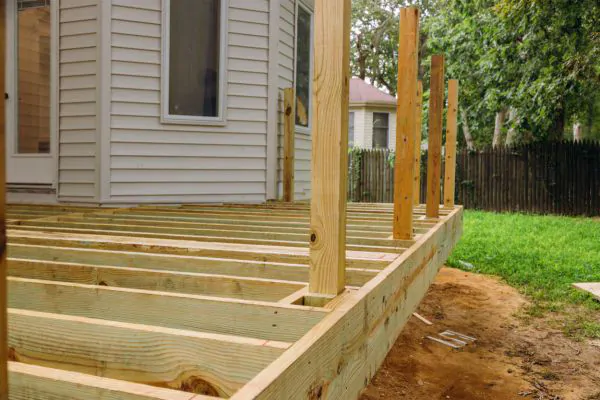
Footings
Footings act as the foundation for your deck, ensuring it has a solid base to stand on. They bear all the weight of the deck structure, spreading it evenly across the ground to prevent sinking or shifting over time.
For stability, footings are often made from concrete and need to be set deep into the ground below the frost line to avoid damage from freezing and thawing cycles. This step is crucial as it affects not only the durability but also the safety of your deck.
After securing strong footings, attention shifts towards installing support posts. These vertical components connect directly to your footing, playing a significant role in supporting your deck’s overall weight and structure.
Support posts
Support posts play a crucial role in a deck’s stability and longevity. These vertical columns are typically made of wood or metal and are installed to bear the weight of the deck, providing essential support for beams and joists.
Properly placed support posts help distribute the load evenly, ensuring that your deck can withstand heavy foot traffic and inclement weather over time.
When designing or building your deck, it’s important to carefully consider the placement and material of your support posts to ensure they meet local building codes and provide adequate structural integrity.
Beams
After establishing solid support posts, the next crucial element to consider is the installation of beams. Beams are horizontal supports that bear the weight of joists and decking boards, distributing the load evenly across the support posts.
They serve as a critical component in maintaining the structural integrity of your deck. When constructing a deck, it is important to carefully select and position beams, ensuring they are securely attached to support posts and properly sized to handle the intended loads.
Properly installing beams will provide essential strength and stability for your deck, minimizing any risk of sagging or structural issues over time. It’s essential to follow local building codes when determining beam size and spacing as these requirements vary based on factors such as overall deck size and placement of heavy objects like furniture or hot tubs.
Joists
Joists are the parallel beams that support the decking surface. They are critical for distributing the weight of the deck and any added load evenly to prevent sagging or other structural issues.
Properly spaced joists provide stability and strength to your deck, ensuring it can support outdoor furniture, grills, and gatherings.
When building your deck, ensure you use pressure-treated lumber for joists to resist rot and decay over time. Additionally, attaching metal hangers to secure each end of the joist can enhance overall durability.
Hardware
When it comes to deck construction, hardware plays a crucial role in providing stability and support. Decking hardware includes metal connectors, screws, nails, and bolts that securely fasten the various components of the deck together.
For instance, joist hangers are essential hardware used to connect joists to beams, ensuring structural integrity. The right choice of hardware is vital for withstanding elements like wind and load-bearing capacity.
The selection of decking hardware should always be based on the type and size of your deck as well as local building codes. It’s crucial to use corrosion-resistant or stainless-steel fasteners, especially in areas prone to moisture exposure.
Understanding Proper Deck Construction
Protecting your joists is crucial for the longevity of your deck. Building a deck can be achieved with proper planning and execution.
Importance of joist protection
Protecting the joists of your deck is crucial to ensuring its longevity and structural integrity. Without proper protection, joists can be susceptible to rot, mold, and decay due to exposure to moisture and weather elements.
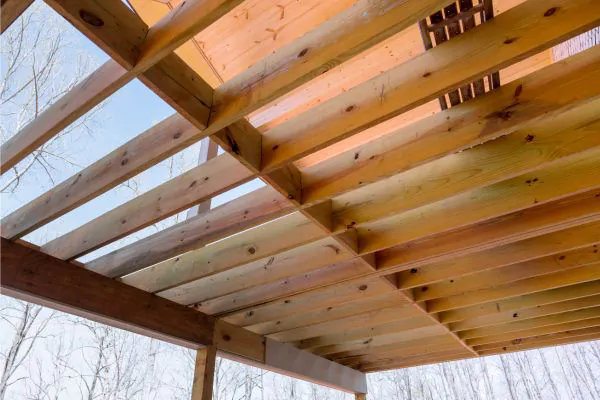
To safeguard them, consider using a protective barrier such as a rubberized membrane or flashing tape between the decking materials and the joists. Additionally, regular inspections and maintenance can help detect early signs of damage and prevent costly repairs in the future.
Understanding how vital it is to protect the joists on your deck will contribute significantly to its durability while minimizing potential issues down the line. By taking proactive steps to shield these essential components from environmental factors, you’ll ensure that your deck remains safe, functional, and visually appealing for years to come.
How to build a ground-level deck
To build a ground-level deck, start by choosing a location that is relatively flat and easily accessible. Clear the area of any vegetation, rocks, or debris. Next, mark the perimeter of the deck using string and stakes.
Ensure the area inside the perimeter is level by using a level or transit to find high and low spots for leveling. Then construct a frame using pressure-treated lumber for durability; this will form the foundation of your deck.
Remember to use concrete footings to support each post that holds up the frame.
After creating the frame, add cross beams in between each pair of parallel joists. When attaching decking boards to create the surface of your deck, consider leaving small gaps in between each board for drainage purposes.
Deck bracing
To ensure the structural integrity of your deck, bracing is essential. Bracing your deck prevents swaying and movement, providing stability and safety. Proper bracing involves securing diagonal wooden or metal supports between posts and beams to prevent lateral movement.
This reinforcement ensures that your deck can withstand external forces such as wind or heavy loads without compromising its stability.
Bracing also helps distribute the weight evenly across the entire structure, reducing strain on individual components. It’s vital for decks built at significant heights or in areas prone to high winds.
Designing and Decorating Your Deck
Choose from a variety of decking patterns to add personality to your outdoor space. Maintain the beauty and longevity of your deck with regular care and maintenance while considering features like pergolas or gazebos for added charm.
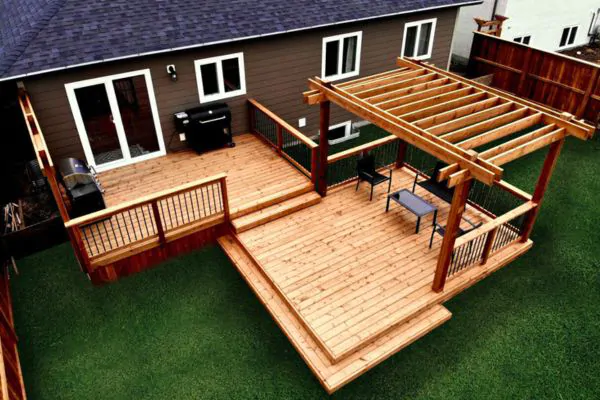
Decking patterns
Laying your deck boards in various patterns can give your outdoor space a distinct look and feel. Opt for classic layouts like parallel or perpendicular to the house or get creative with diagonal or herringbone designs.
Some homeowners also opt for picture framing where the outer edges of the deck are accented with contrasting boards, adding visual interest. Alternatively, mixing different colored boards can create a unique and personalized design.
When planning your decking pattern, consider the size and shape of your deck as well as any built-in features like posts or stairs. Keep in mind that certain patterns may require more cutting and fitting, which could affect both installation time and material waste.
Decking care and maintenance
Maintaining the beauty and longevity of your deck involves regular care. Cleaning your decking surface with a gentle soap and water solution helps remove dirt and debris, preserving its appearance.
Regularly inspecting for loose boards, popped nails, or rot is essential to address any issues promptly. Additionally, sealing and staining the deck every few years protects it from moisture and UV damage, ensuring its durability.
To maintain your deck’s pristine condition, keep an eye out for signs of wear and tear such as splintering wood or discoloration due to weather exposure. Applying a protective finish can safeguard against these effects while enhancing the overall look of your outdoor space.
Incorporating features like pergolas or gazebos
Enhance your outdoor living space by incorporating features like pergolas or gazebos. These structures not only add aesthetic appeal but also provide shade and a cozy spot for relaxation.

Pergolas can be adorned with climbing plants to create a natural, inviting atmosphere, while gazebos offer a sheltered space for dining or socializing. Integrating these features into your deck design adds character and functionality, elevating the overall ambiance of your outdoor area.
When considering the addition of pergolas or gazebos to your deck, consider the size and layout of your space to ensure proper placement and proportion. For maintenance-free options, consider materials such as vinyl or aluminum that require minimal upkeep while still providing lasting beauty and durability.
Decking DIY vs Hiring a Pro
Deciding whether to build a deck yourself or hire a deck professional is a critical choice with various factors. For in-depth insights that will help you make an informed decision, read on.
Pros and cons of building a deck yourself
Building a deck yourself gives you the satisfaction of creating something with your own hands. It allows you to customize the design and choose the materials based on your preferences and budget.
You have control over the construction process, ensuring that it meets your expectations. However, building a deck requires time, effort, and some level of expertise in construction.
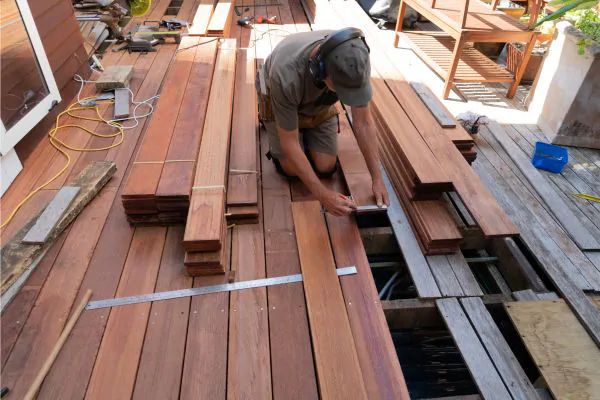
Mistakes can be costly, and there’s a risk of improper installation leading to safety hazards or structural issues.
Hiring a professional for deck construction ensures expertise, saving you time and potential mistakes. Professionals are equipped with knowledge of local building codes and regulations, ensuring compliance with safety standards.
Considerations for hiring a professional
If you decide that hiring a professional is the best option for you, make sure to carefully vet and research potential contractors. Ask for references from previous clients, check their certifications and licenses, and inquire about insurance coverage.
Request detailed estimates and compare prices to ensure that you are getting the best value for your investment.
When hiring a professional, communication is key. Clearly outline your expectations regarding design, materials, budget, and timeline. It’s crucial to have a written contract that details all aspects of the project including payment schedules and warranties.
Conclusion
Understanding the various parts of a deck gives you the knowledge needed to plan and build one that will stand the test of time.
You now have a clear understanding of how everything from footings to hardware works together to create a sturdy structure for your outdoor space.
Armed with this insight, you can confidently make decisions about DIY construction or hiring a professional to bring your decking dreams to life.
